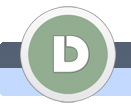|
|
|
|
|
Photoshop personalized New Year greeting card part 1
Create a New Year's card made out of pictures and photos that made your year. This is the part one of the Photoshop tutorial.
|
|
 |
|
|
|
|
|
 |
|
 |
|
 |
 |
1.
|
|
|
For this personalized New Year's greeting card you will need 4 photos for each of the digits that make 2013 and one for the background.
Create a new document and choose the Horizontal Type Tool and choose some thick font.
|
|
| |
3.
|
|
|
Click the Commit button to confirm the text (see picture).
|
|
| |
4.
|
|
|
Press Ctrl + T to enter the free transform mode.
Make the text bigger by dragging the corners.
Hold the Shift key to keep the text proportions in tact.
Press Enter to confirm the changes.
|
|
| |
5.
|
|
|
Now drag the three guides from the ruler and position it between the digits (see picture).
Click here to learn how to use guide lines in Photoshop.
|
|
| |
6.
|
|
|
Let's now place the first photo over the first digit.
In the menu click File and choose Place...
Browse for the picture you want to use and click Place.
|
|
| |
7.
|
|
|
Reduce the opacity of the new layer you just added by placing the picture so it will be easier to place the picture over the digit.
|
|
| |
8.
|
|
|
Resize the photo and move it so it will fit the first digit (see picture).
Again hold Shift key while resizing to keep the picture proportions in tact.
Press Enter to confirm the changes.
|
|
| |
9.
|
|
|
Right click the first picture layer and choose Rasterize Layer.
Don't forget to set the layer opacity back to 100%.
|
|
| |
10.
|
|
|
Place the second picture the same way you did the first.
|
|
| |
11.
|
|
|
Let's now get rid of the pieces of the picture that are covering the first picture.
Choose the Rectangular Marquee Tool.
|
|
| |
12.
|
|
|
Select the part of the second picture that's sticking over the picture. The right side of the selection should stick to the first guide line (see picture).
|
|
| |
13.
|
|
|
Press Delete to delete the selection.
|
|
| |
14.
|
|
|
Now do the same thing for the remaining two images. You should end up with something like this.
|
|
| |
15.
|
|
|
Now select all four picture layers.
Hold Ctrl while selecting the layers to select all four.
|
|
| |
16.
|
|
|
Press Ctrl + E to merge all the selected layers into single layer.
|
|
| |
17.
|
|
|
Right click the merged layer and choose Create Clipping Mask.
|
|
| |
18.
|
|
|
You should get a result similar to mine.
Click here if you want to learn more about the Clipping Mask.
|
|
| |
19.
|
|
|
Let's now insert the background picture.
Again in the menu click File, choose Place... and choose the picture you want as a background.
The picture should cover the whole document.
|
|
| |
20.
|
|
|
Move the new picture layer beneath the text layer (see picture).
Simply click, hold and drag the layer.
|
|
| |
21.
|
|
|
In the menu click Filter, Blur and choose Gaussian Blur...
Set the Radius to about 3 pixels and click OK.
|
|
| |
22.
|
|
|
Now choose the text layer (see picture) ...
|
|
| |
23.
|
|
|
... and press Ctrl + J to duplicate the layer, then select the original text layer again (see picture).
|
|
| |
24.
|
|
|
Press V to select the Move Tool and move the text a bit to the right and down so it will look like a shadow.
You will not see the text you are about to move as it's perfectly aligned with the text layer above, simply click the text and move it.
You can use the arrow keys on your keyboard to fine tune the position of the underlaying "shadow" layer.
To get rid of the guide lines click View, Show and then Guides.
Click here for the part 2 of the tutorial.
|
|
|
 |
 |
 |
|
 |
|
|
